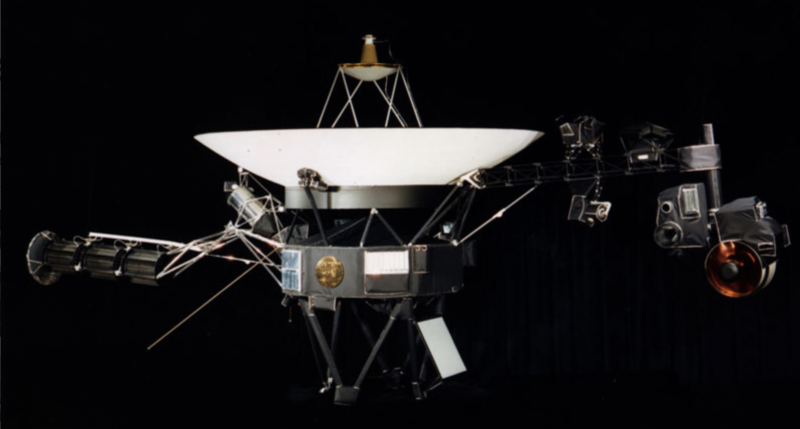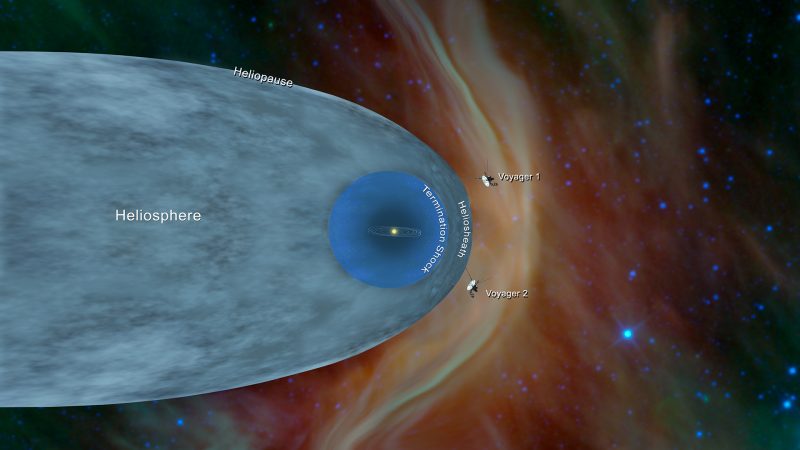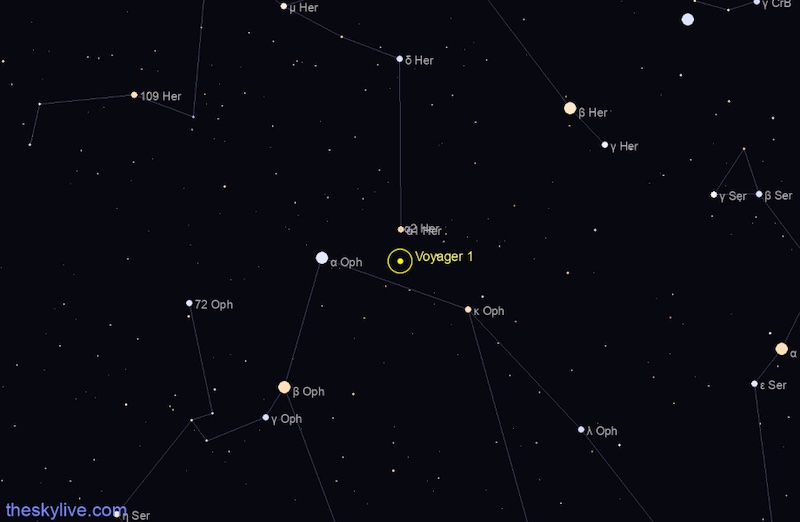Recent Data Suggest That as It Continues on Its Course the Voyager Spacecraft is

Mysterious data from Voyager 1
Voyager 1, which launched in 1977, is some 14.5 billion miles (23 billion km) from Earth. Scientists say it's beyond our solar system, in interstellar space. The 45-year-old probe has been a model of endurance, continuing to send back data using decades-old technology. But on May 18, 2022, NASA announced that Voyager 1 has been sending back mysterious data. The probe's attitude articulation and control system (its AACS) has the job of controlling the spacecraft's orientation, pointing its high gain antenna toward Earth and controlling attitude maneuvers. Now the AACS has sent back data that doesn't reflect what's happening aboard Voyager. NASA explained:
… the data may appear to be randomly generated, or does not reflect any possible state the AACS could be in.

A 2-day round trip message time
For the most part, Voyager 1 still appears to be working correctly, gathering and returning science data. It's receiving and executing commands from Earth, although – because of its great distance from us – it takes about two days to send a message and get a response. Because we're still in communication with Voyager 1, we know the antenna is still pointing toward us, regardless of the strange nature of the telemetry data readings.
NASA said:
The team will continue to monitor the signal closely as it continues to determine whether the invalid data is coming directly from the AACS or another system involved in producing and sending telemetry data. Until the nature of the issue is better understood, the team cannot anticipate whether this might affect how long the spacecraft can collect and transmit science data.

Communicating with interstellar space
Voyager 1 is the most distant humanmade object from Earth. Working with a system that is so far away – and that was designed so many decades ago – presents many challenges, beyond just the lag in communications. Suzanne Dodd, project manager for Voyager 1 and 2, commented:
A mystery like this is sort of par for the course at this stage of the Voyager mission. The spacecraft are both almost 45 years old, which is far beyond what the mission planners anticipated. We're also in interstellar space: a high-radiation environment that no spacecraft have flown in before. So there are some big challenges for the engineering team. But I think if there's a way to solve this issue with the AACS, our team will find it.
Once the team finds the source of the problem, engineers might be able to solve the issue through software changes, or by using one of the spacecraft's redundant hardware systems. But if they can't find the source of the problem, they might just have to adapt to living with the discrepancies.
Voyager 1's journey has encountered obstacles before. In 2017, the spacecraft's primary thrusters were showing signs of wear and tear. The engineers switched to other thrusters on Voyager 1, thrusters that operated during the mission's planetary encounters some 37 years earlier. It's another example of the remarkable longevity and ingenious design of the Voyager spacecraft.
(And remember: This is interstellar exploration. Solving mysteries takes time when messages to my team take nearly 20 hours to arrive!)
— NASA Voyager (@NASAVoyager) May 19, 2022
Bottom line: Voyager 1, the most distant humanmade object from Earth, has been sending back strange data, a mystery scientists are trying to solve.
Via NASA
Source: https://earthsky.org/space/voyager-1-mystery-random-telemetry-data/
0 Response to "Recent Data Suggest That as It Continues on Its Course the Voyager Spacecraft is"
Post a Comment